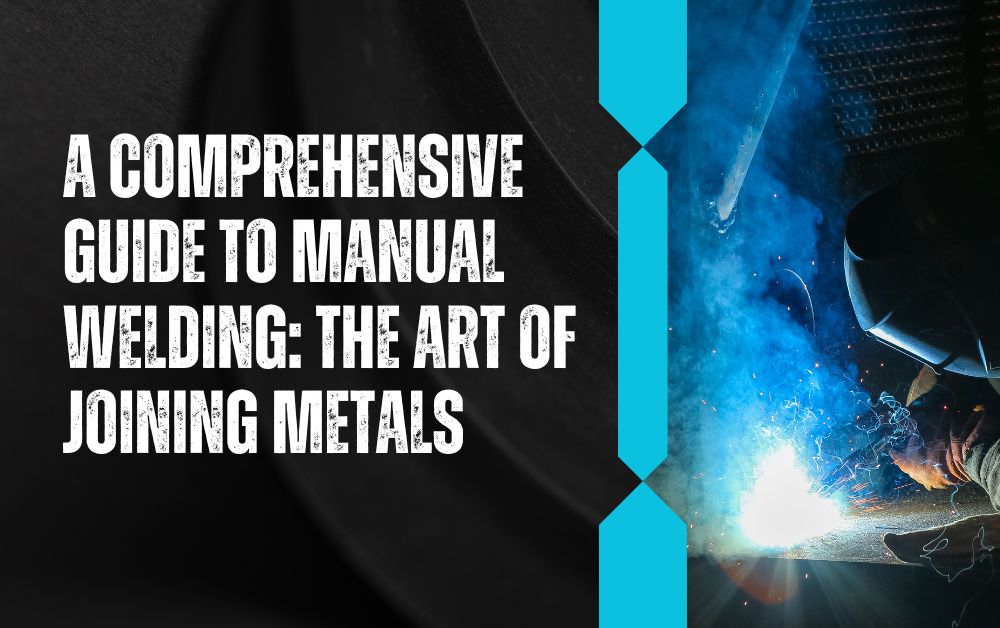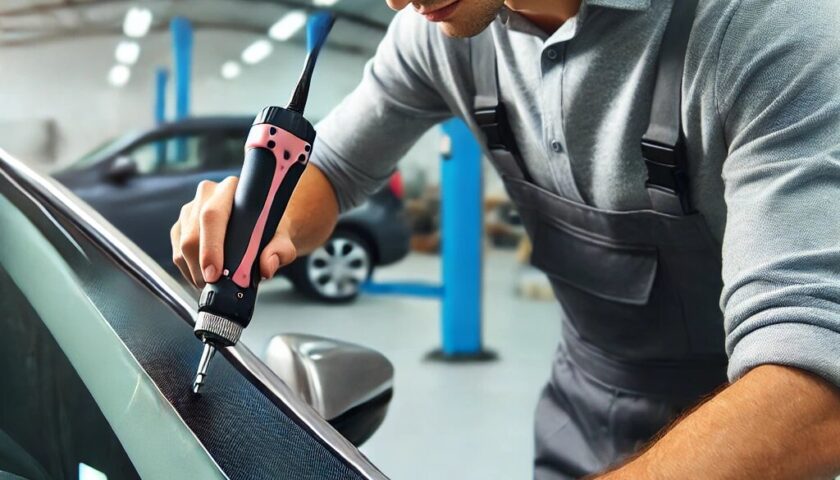Manual welding is a time-honored craft that has been a fundamental part of metalworking for centuries. In this guide, we will explore the world of manual welding, breaking down the process, the various techniques involved, the essential equipment needed, and why it remains a crucial skill in various industries today.
What is Manual Welding?
Manual welding is a metal joining process that relies on the skill and expertise of a trained welder to fuse two or more metal pieces together. Unlike automated or robotic welding, manual welding is a hands-on approach where the welder controls the welding process.
The Basic Process of Manual Welding
Manual welding involves a straightforward process, and here are the key steps:
1. Preparation
- Before starting the welding process, the metal pieces to be joined are cleaned and prepared. This includes removing any rust, paint, or contaminants from the surfaces.
2. Arc Formation
- Manual welding typically uses an electric arc to generate the heat needed for welding. The welder strikes an arc between the metal pieces and the welding electrode, creating intense heat.
3. Metal Fusion
- As the heat from the arc melts the edges of the metal pieces, they fuse together to form a solid joint. The welding electrode also melts, adding filler material to the joint if needed.
4. Cooling
- After the welding is complete, the welded joint is left to cool naturally or is quenched in water to expedite the cooling process.
5. Inspection
- The welded joint is carefully inspected for quality and integrity. Any imperfections, such as cracks or voids, are addressed.
Manual Welding Techniques
Manual welding encompasses various techniques, each suited to specific applications and materials. Here are some common manual welding methods:
1. Shielded Metal Arc Welding (SMAW)
- Description: SMAW, also known as “stick welding,” is a versatile technique that uses a consumable electrode coated in flux. The flux creates a shielding gas to protect the weld from atmospheric contaminants.
2. Gas Metal Arc Welding (GMAW)
- Description: GMAW, often referred to as “MIG welding,” uses a continuous wire electrode and a shielding gas, typically a mixture of argon and CO2. It’s known for its ease of use and is suitable for a wide range of metals.
3. Gas Tungsten Arc Welding (GTAW)
- Description: GTAW, or “TIG welding,” employs a non-consumable tungsten electrode and a separate filler material, if required. It uses an inert gas, such as argon, for shielding and is known for its precision and clean welds.
4. Flux-Cored Arc Welding (FCAW)
- Description: FCAW is similar to GMAW but uses a tubular wire filled with flux. This eliminates the need for an external shielding gas and is suitable for outdoor welding.
Essential Equipment for Manual Welding
To perform manual welding effectively, welders need specific equipment. Here’s an overview of the essential tools:
1. Welding Machine
- Description: The welding machine generates the electric current required for welding. It can be powered by electricity or other sources like gas or diesel.
2. Electrode Holder
- Description: The electrode holder, also known as a “stinger,” holds the welding electrode and allows the welder to control its positioning.
3. Ground Clamp
- Description: The ground clamp connects to the workpiece, completing the electrical circuit and providing a path for the welding current.
4. Safety Gear
- Description: Safety gear includes welding helmets, gloves, safety glasses, and protective clothing to shield the welder from sparks, UV radiation, and heat.
5. Welding Electrodes
- Description: Welding electrodes come in various materials and coatings, each suitable for specific welding processes and metals.
Why Manual Welding Matters
Manual welding remains a critical skill in several industries for several reasons:
1. Versatility
- Explanation: Manual welding techniques can be applied to a wide range of metals, making it suitable for various applications, from construction to automotive to aerospace.
2. Precision
- Explanation: Skilled welders can achieve precise and clean welds, crucial in industries where structural integrity and quality are paramount.
3. Repair and Maintenance
- Explanation: Manual welding is indispensable for repairing and maintaining existing structures and machinery, extending their lifespan and minimizing downtime.
4. Cost-Effective
- Explanation: Manual welding equipment is more affordable and portable compared to automated welding systems, making it accessible to smaller businesses and remote job sites.
Becoming a Manual Welder
If you’re interested in becoming a manual welder, here are the steps to get started:
1. Education and Training
- Guidance: Enroll in a welding training program or apprenticeship to learn the fundamentals of manual welding techniques, safety procedures, and welding theory.
2. Practice
- Guidance: Practice is essential to develop your welding skills. Spend time working on different projects and materials to gain hands-on experience.
3. Certification
- Guidance: Consider obtaining welding certifications from recognized organizations. Certification can enhance your employability and earning potential.
4. Job Search
- Guidance: Begin your career by searching for welding job opportunities in industries that align with your interests and skills.
The Timeless Craft of Manual Welding
1. A Link to Tradition: Manual welding connects us to the traditions of blacksmiths and metalworkers who forged the foundations of modern construction and manufacturing. It’s a bridge between the past and the present, reminding us of the craftsmanship that has shaped our world.
2. Artistry in Metal: Skilled manual welders are often likened to artists. Their ability to manipulate molten metal, shaping it into precise forms and strong bonds, is a testament to the fusion of science and creativity.
3. Craftsmanship in Every Weld: Every manual weld is a testament to the welder’s expertise. From the selection of the right electrode to the control of heat and the finesse of the final pass, each weld reflects the dedication and skill of the person behind the torch.
The Modern Relevance of Manual Welding
1. Key Role in Infrastructure: Manual welding is integral to the construction of critical infrastructure, including bridges, buildings, and pipelines. It ensures the structural integrity of these vital components of society.
2. Automotive Precision: The automotive industry relies on manual welding for precise and reliable joining of components, contributing to the safety and durability of vehicles.
3. Aerospace Excellence: In aerospace, where the margin for error is virtually nonexistent, manual welding continues to be a cornerstone. It’s used to create components that withstand the rigors of space and aviation.
4. Innovations in Energy: As the world seeks cleaner and more efficient energy solutions, manual welding plays a significant role in fabricating renewable energy systems, such as wind turbines and solar panels.
5. Artful Metalwork: Beyond its industrial applications, manual welding finds a place in the world of art and design. Sculptors and craftsmen use it to craft intricate metalwork and sculptures that adorn public spaces and homes.
The Future of Manual Welding
As technology advances, the role of manual welding continues to evolve:
1. Automation Integration: Manual welders are increasingly working alongside automated welding systems. This fusion of human skill and machine precision enhances productivity and quality.
2. Training and Education: With the growing demand for skilled welders, training and education programs are evolving to equip welders with the latest techniques and technologies.
3. Sustainable Practices: Manual welders are exploring sustainable practices, from using eco-friendly filler materials to adopting energy-efficient welding processes.
Conclusion
Manual welding is a timeless craft that continues to be an essential part of various industries worldwide. It’s a skill that demands expertise, precision, and dedication. Whether you’re considering a career in welding or looking to appreciate the artistry behind metal joining, understanding the basics of manual welding is the first step in exploring this age-old yet ever-evolving craft.
Also read our other blog :- All About Cladding Dubai: Enhancing Buildings with Style





